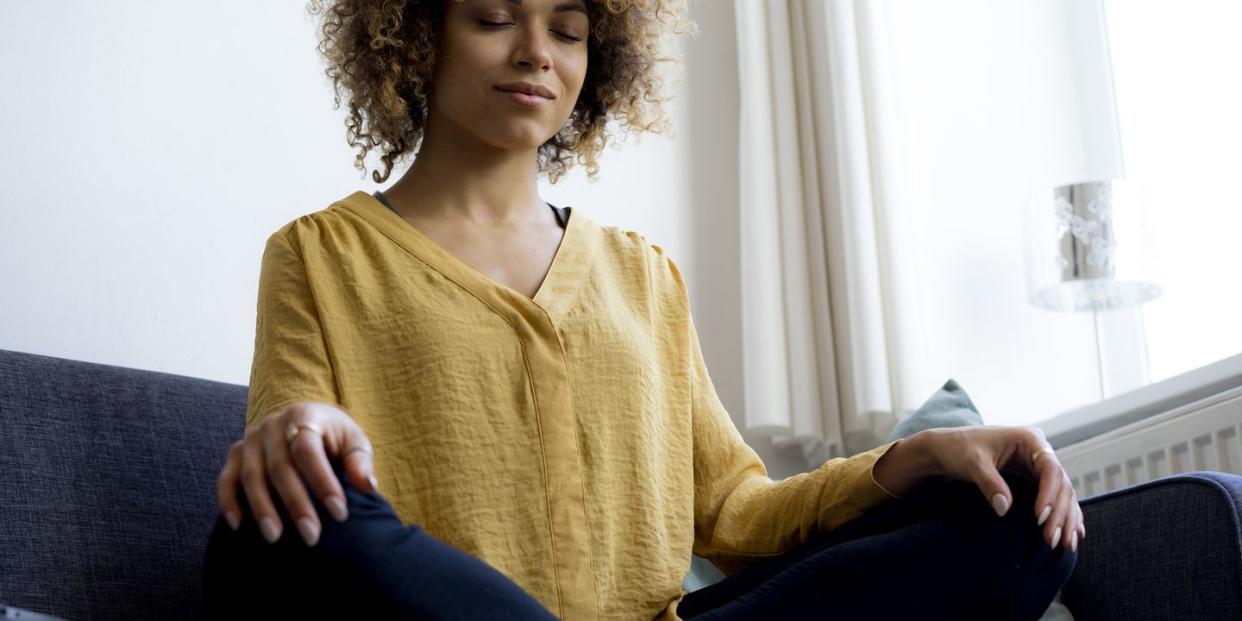Try these simple mindfulness techniques to get to sleep

Can’t get to sleep? If your mind is constantly buzzing and you struggle to unwind after a busy day, mindfulness could provide the answer.
We speak to Dr Audrey Tang, a Chartered Psychologist and the author of The Leader's Guide to Mindfulness, about how to utilise mindfulness meditation to calm an overactive mind and help you drift off to sleep:
What is mindfulness?
Mindfulness is a simple form of meditation based on being aware of the present moment and the practice of being more attuned to the health of your body and mind.
‘It is the ability to live in the present, rather than feeling caught on the treadmill of life; to actively choose our behaviours with awareness of how they may impact on others; and to be aware of what our body is telling us – and to use that knowledge,’ explains Dr Tang.
How do you practise mindfulness?
While the concept is straightforward, in practice it might seem overwhelming. But incorporating a few simple mindfulness techniques into your day could help with stress, mindset and most importantly, a restful night's sleep.
‘Simple deep breathing and stretching with awareness of how our body is feeling is a good start to the ability to listen to what we are feeling… hence the link to meditation and yoga as a form of mindful practice,’ says Dr Tang. ‘Further, deep breathing relaxes the mind and a clearer mind enables us to make better judgments.’
‘However, any technique which enhances our ability in the areas of awareness of the self, the other, active behaviour and to embrace the present moment can help us be more mindful,' she adds. 'This in turn will improve our performance and our wellbeing.’
3 simple and effective mindfulness practices
To get started, Dr Tang recommends these three simple but effective mindfulness practices to fully embrace the present moment, which anyone can do:
✔️ The Gratitude stretch
When you wake, stretch your arms and think of one thing you are grateful to have. Stretch your legs and think of one person you are grateful to know. Finally stretch your whole body and think of one thing you are looking forward to today. This keeps you focused in there, here, now – and on what you have.
✔️ Observe with all your senses
It’s not just your eyes that give you information, discover what you can learn about a situation or experience by also thinking about taste, touch, smell, and hearing.
✔️ Watch your language
Instead of seeing things as 'good', 'bad', 'right' or 'wrong' – remember this can all be dependent on context. Rather, by looking at an action as 'effective' or 'ineffective' in the pursuit of your desired outcome you become focused on what you want to achieve, as well as remove unnecessary emotional weight from your behaviours.
Mindfulness to prepare you for sleep
Before you go to bed, Dr Tang recommends the following routine. ‘Being actively aware of your behaviour leading up to sleep is just as important,’ says Dr Tang.
‘One of the most important thing when it comes to sleeping is to keep the mind in a relaxed state. While the following mindfulness exercise will help, it is also important to wind down – otherwise “telling” the mind to “relax” will often cause it more stress!’
Try and do the following before you prepare for bed:
Have a glass of water by your bed.
Keep a writing pad by your bed for when you wake in the middle of the night and need to remember something – write it down (try not to open your phone!)
Stop drinking caffeinated drinks about six hours before bed – and instead have a camomile tea, or warm water, or even warm milk.
Come off social media/your smartphone an hour before bed.
Try these simple mindfulness techniques
‘Mindful practice – such as deep breathing or a relaxation body-scan, can be a helpful technique to prepare the body for sleep,’ explains Dr Tang. Once you are ready for bed, follow these steps to help you drift off to sleep:
1 Start with some deep breaths to centre yourself – breathe in for three, hold for two and out for five.
2 As you do this, if other thoughts pop by, either write them down if they are important, or acknowledge them and let them pass – return to your breathing.
3 Think that a warm ray of sun is relaxing your feet.
4 Repeat the words 'breathe and relax' as you stretch then relax your feet; the ray moves and warms your legs again think 'breathe and relax' as you stretch and relax your legs.
5 Focus next on your hips, and then torso – again think 'breathe and relax' and enjoy the sensation of that warm relaxation.
6 Move the warmth to your shoulders, and down your arms to the tips of your fingers – 'breathe and relax' and finally your neck and the top of your head – think 'breathe and relax' then continue to enjoy breathing calmly.
7 You may wish to play some 'nature sounds' such as a forest, or waves; or else you may find piano music soothing.
8 This exercise brings deep breathing (along with its physiological benefits) as well as stretching and the mind-priming word 'relax' into the context of the bedroom forming healthy unconscious associations.
💟 Dr Audrey Tang is a Chartered Psychologist and the author of The Leader's Guide to Mindfulness, published by FT Publishing, priced £14.99.
('You Might Also Like',)


